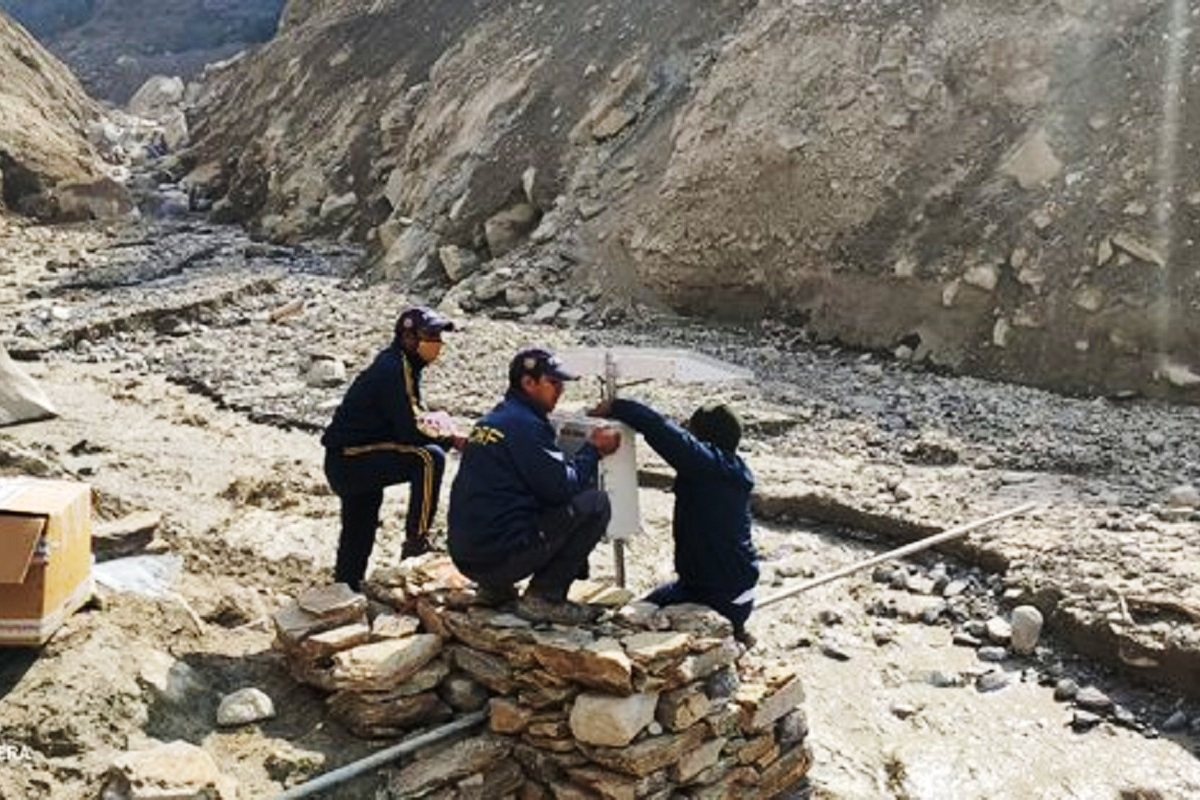Cong demands thorough audit of all projects in Himalayan region
The development assumes significance in the wake of Silkyara tunnel collapse.
In the absence of such an approach, a complete survey of the likely impacts on flora and fauna is ignored.

(SNS)
The Himalayan region is torn between competing interests. It is one of the most biodiverse regions in the world. It is the cradle of the river systems of Asia. The Ganga, Indus, Brahmaputra and Amu Darya all originate in the Himalayan glaciers. The Himalayan region also contributes to economic development of the Himalayan countries through hydropower. The construction of hydropower projects is continuing despite scientific evidence warning of dire consequences.
Will we heed the warning of the recent Chamoli disaster? While the need for development initiatives cannot be denied, the pathway of development should not compromise the environment. Environmental impact assessments can enable a fully informed and unbiased decision regarding a project. Unfortunately, their effectiveness as an environmental decision-making tool has been greatly reduced in recent years. Environmental impact assessments should be participative, transparent, unbiased, rigorous, provide complete information regarding all impacts and have a robust follow-up mechanism.
They should also present alternatives regarding the design and construction of the project and its location. This will then lead to rulebased decision making, enabling the decision-maker to ensure No Net Loss of biodiversity. However, environmental clearances tend to be granted based on EIAs that lack, downplay and very often even hide key information. There are now over 300 hydropower projects in different stages of planning and construction in India’s Himalayan river basins.
Advertisement
If all dams are constructed, the Indian Himalayas would have one of the highest average dam densities in the world, with dams constructed in 28 of the 32 major river valleys. There would be one dam for every 32 km of river channel. When you add to this the fact that each of India’s neighbours is also planning to build hydropower projects in the Himalayan region, the scale of potential environmental impacts becomes dramatic. The Indian government is pushing hydropower development in the Eastern Himalayas.
The extent and manner in which this development is being planned will be ecologically catastrophic. This region is a treasure trove of endemic biodiversity, which is under serious threat due to anthropogenic interventions. Fifty-four percent of the nation’s threatened mammals, 68 per cent of endangered birds and 63 per cent of endangered reptiles are found in this region. Several iconic and endemic mammals, such as clouded leopards, reside in the lush forests of the North East.
Their population is now fragmented and dwindling. According to the World Wildlife Fund, the habitat of the clouded leopard has been decreasing at a rate of 10 per cent per year since 1997. The Namdapha flying squirrel is listed in ‘IUCN’s ‘critically endangered’ category and is on the verge of extinction. There have been no sightings of this species in its habitat since 2002. The ever-increasing anthropogenic pressure and the pandemic induced conservation crisis are pushing the unique species of the North East to the brink of extinction.
Increasing construction of hydropower projects will make matters worse. EIA studies in India are conducted in a project-specific manner. Cumulative impacts of hydropower development, as well as the impacts of upstream and downstream projects, are not considered at the scoping stage and are not included in the formulation of the Terms of Reference of the EIA. The lack of clear policies on conducting cumulative impact assessments encourages project proponents and EIA consultants to avoid an ecosystem approach.
In the absence of such an approach, a complete survey of the likely impacts on flora and fauna is ignored. In the North East, indigenous communities have been working to protect the region’s biodiversity. The Lepcha community has been at the forefront of trying to save the Himalayan Kanchenjunga landscape. Kanchenjunga is considered by them to be the ‘Mother Mountain’. They have been protesting the construction of hydropower projects on their sacred rivers in Dzongu, the Lepcha reserve bordering the Kanchenjunga Biosphere Reserve.
Dzongu is sacred to the Lepchas, as is the Teesta which flows through it. Other indigenous communities have also been contesting hydropower development in their home regions. Where are their voices in the government’s development plans and policies? It is well known that public consultations are poorly conducted in EIA studies and the views expressed by members of local communities are not taken into account.
Weak public participation is not merely a procedural flaw; it violates environmental democracy. Destruction of Himalayan biodiversity will strongly impact the lives of people in India, as well as across Asia. The critical importance of this region for climate, water and food security must be considered paramount while designing development policies and programs.
(The writers are respectively, Associate Professor of Environmental Law and Environmental Science and co-directors of the Environmental Law and Science Advocacy Forum, Jindal School of Environment and Sustainability, O.P. Jindal Global University)
Advertisement